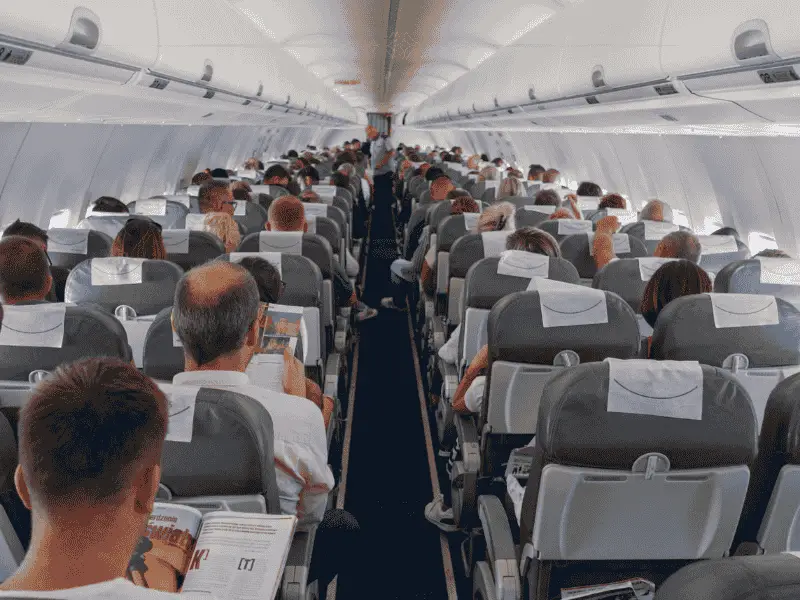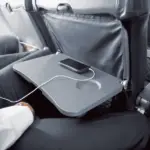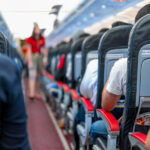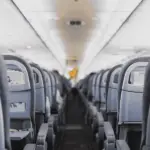Flight attendants across major airlines are reporting a troublesome trend disrupting the boarding process and passenger experience: seat squatting. This increasingly common behavior involves passengers deliberately sitting in seats not assigned to them, creating conflicts between travelers and headaches for airline staff. As air travel returns to pre-pandemic levels, this phenomenon has evolved from occasional annoyance to regular occurrence on flights worldwide.

When Your Seat Isn’t Really Yours
Most air travelers follow a familiar routine: check in, receive a seat assignment, board, and sit in the designated spot. However, flight crews now regularly encounter passengers who ignore this fundamental aspect of modern air travel. These seat squatters deliberately occupy seats that belong to other passengers, hoping to upgrade their flight experience without paying for the privilege.
The behavior has become common enough that frequent flyers share stories about it on social media and travel forums. One popular travel blogger recently described watching three separate seat squatting incidents unfold during a single transcontinental flight. Flight attendants with decades of experience report that what was once rare has become a daily challenge.
Several major carriers have acknowledged the issue in internal communications, with cabin crew reporting increased frequency of these incidents across domestic and international routes. While airlines have always dealt with occasional seating disputes, the deliberate nature and increasing boldness of seat squatters represent a concerning shift in passenger behavior.
The Psychology Behind the Seat Grab
The motivations driving seat squatting behavior reveal interesting patterns. For some travelers, it’s a calculated risk with potential rewards. Window seat enthusiasts stuck with middle assignments might spot an empty window seat and make a move. Travelers separated from companions might seize unoccupied adjacent seats to sit together.
The calculus often involves assumptions about whether the rightful seat holder will show up. Late-boarding passengers frequently find their assigned seats occupied by squatters who gambled that the flight would depart with empty seats. This strategy particularly targets exit rows, bulkhead seats, and other premium locations within the same cabin class.
Travel psychology experts point to several factors behind this behavior. Risk-reward assessment plays a key role – the potential benefit of a better seat often outweighs the perceived social cost of being asked to move. Many seat squatters operate on the assumption that confrontation is unlikely, banking on the conflict-avoidant nature of many travelers.
Entitlement also drives some squatters, particularly frequent flyers who feel their loyalty deserves recognition beyond formal upgrade programs. These passengers may feel justified in claiming better seats regardless of what their boarding pass indicates. For others, seat squatting represents a small rebellion against an airline industry they perceive as increasingly nickel-and-diming passengers for basic comforts.
Tactical Approaches to Unauthorized Seating
Seat squatters employ various strategies to maintain their unauthorized positions. The most common approach involves feigning confusion – pretending to misread the seat assignment or claiming to have switched seats with another passenger. This provides plausible deniability while putting the burden of enforcement on others.
Strategic timing plays a crucial role. Many squatters deliberately board early to establish themselves in premium seats, calculating that late-arriving rightful occupants might simply accept an alternative rather than create a scene. Others wait until the last possible moment before takeoff when flight attendants are busy with final preparations and less likely to verify seating arrangements.
Some employ the “drowsy passenger” technique – pretending to be asleep when the legitimate seat holder arrives. This creates an awkward situation where waking the squatter seems impolite, increasing the chances the rightful passenger will simply find another seat. Other squatters immediately stow their belongings in overhead bins and settle in completely, making displacement more complicated.
The most problematic squatters take an aggressive stance when confronted, directly challenging other passengers or even flight attendants who attempt to enforce assigned seating. While rare, these confrontational squatters create significant disruption, sometimes delaying flights and requiring intervention from ground staff or even airport security.
The Ripple Effects of Seat Displacement
What might seem like a simple seat swap often creates cascading problems throughout the aircraft. When one passenger takes an unassigned seat, the displaced traveler must find their actual seat or take another open position, potentially displacing someone else in turn. On full flights, this can result in multiple passengers playing musical chairs moments before departure.
Family seating arrangements suffer particular disruption from seat squatting. Parents who carefully book adjacent seats for their children may find a squatter breaking up their family group. Elderly travelers or those with medical needs who selected specific seats for accessibility reasons face additional stress when forced to confront seat squatters.
Airlines have increasingly monetized seat selection, charging premium prices for desirable locations like exit rows, bulkhead seats, or positions near the front of the cabin. When passengers who paid these fees find their seats occupied, it undermines the airline’s revenue model and creates customer satisfaction issues that extend beyond the immediate seating conflict.
Flight delays represent another serious consequence. While a single seating dispute might take just minutes to resolve, multiple incidents during boarding can accumulate into significant departure delays. These delays impact not just the immediate flight but can ripple through an airline’s entire daily schedule.
Cultural Dimensions of Seat Conflicts
Attitudes toward seat squatting vary significantly across different regions and cultures. North American travelers typically view assigned seating as contractual – the seat on your boarding pass is yours by right. However, travelers from regions with more fluid queuing norms or different perspectives on personal space may view seating arrangements with greater flexibility.
International carriers face particular challenges with seat squatting due to these cultural differences. Flight attendants must navigate enforcement while remaining sensitive to diverse cultural expectations. This balancing act becomes especially difficult on routes serving multiple regions with different norms regarding confrontation and authority.
Language barriers further complicate these interactions. A passenger who appears to be ignoring seating assignments might simply misunderstand instructions due to language differences. Flight attendants must determine whether they’re dealing with deliberate seat squatting or genuine confusion, all while maintaining the efficient boarding process airlines demand.
Some cultures place greater emphasis on group travel, with families expecting to sit together regardless of assigned seating. When airlines separate these groups due to booking algorithms or availability, some passengers take matters into their own hands, creating seating conflicts born of different cultural expectations rather than intentional rule-breaking.
The Flight Attendant’s Dilemma
Cabin crew find themselves on the front lines of seat squatting conflicts, forced to mediate disputes while maintaining on-time departures. These confrontations place flight attendants in a challenging position, balancing customer service with rule enforcement. Many report increasing stress from these interactions, which can quickly escalate into heated exchanges.
Airlines have provided inconsistent guidance on handling these situations. Some carriers instruct crew members to strictly enforce assigned seating, while others grant flight attendants discretion to allow seat changes that don’t disrupt other passengers. This inconsistency creates confusion for both crew and travelers about what rules actually apply once boarding begins.
Flight attendants must also consider safety implications. Aircraft weight distribution, especially on smaller planes, depends partly on passenger seating arrangements. Emergency procedures rely on accurate passenger manifests that match actual seating. When passengers sit in unassigned locations, these safety systems become less reliable.
Many flight attendants describe feeling caught between competing priorities. They face pressure from management to ensure on-time departures while also enforcing increasingly complex seating policies. Add in the challenge of maintaining positive customer interactions while resolving conflicts, and seat squatting becomes a significant source of workplace stress for cabin crew.
Legitimate Seat Switching vs. Squatting
Not all seat changes constitute problematic squatting. Airlines and passengers alike recognize situations where flexibility benefits everyone. When a flight has numerous empty seats after boarding completes, passengers commonly spread out for comfort. Most airlines unofficially permit this practice once doors close, provided passengers return to assigned seats for takeoff and landing when required.
Consensual seat swaps represent another acceptable practice. Passengers frequently arrange mutually beneficial exchanges, such as trading window and aisle seats or allowing family members to sit together. These cooperative arrangements, conducted with flight attendant awareness, differ fundamentally from unilateral seat squatting.
The timing of seat changes also matters. Moving to an unoccupied seat after completion of boarding and with crew approval falls within accepted norms on many airlines. The problematic behavior centers on claiming seats during the boarding process, particularly when done in ways that create confusion or conflict with other passengers.
Flight attendants generally distinguish between these scenarios based on passenger behavior. Travelers who ask permission before changing seats rarely create problems. The issues arise with passengers who make unauthorized moves without communication, especially when they resist returning to assigned seats when requested.
Strategies for Rightful Seat Holders
Regular travelers have developed various approaches for handling seat squatters. The most effective strategy begins with clear communication – simply stating, “I believe you’re in my seat” while displaying a boarding pass often resolves the situation without conflict. This direct but non-confrontational approach gives squatters an opportunity to move without losing face.
Timing can significantly impact these interactions. Addressing the situation immediately upon discovering a squatter prevents the occupant from becoming more established in the seat. Waiting or hesitating often makes resolution more difficult, as the squatter becomes more invested in maintaining their position.
When direct communication fails, involving flight attendants represents the next step. Experienced travelers recommend politely requesting assistance rather than engaging in extended arguments with uncooperative squatters. Crew members have both the authority and responsibility to resolve seating conflicts, though their approaches may vary.
Some frequent flyers take preventive measures, such as downloading airline mobile apps that display current seat maps, allowing them to identify potential issues before boarding. Others make a point of boarding during early groups when possible, reducing the likelihood of finding their seats occupied upon arrival.
The Bigger Picture
Seat squatting exists within a broader context of evolving passenger behavior and airline business models. As carriers have unbundled services, charging separately for seat selection, extra legroom, and other amenities previously included in ticket prices, some travelers have responded by attempting to access these features without payment.
The phenomenon also reflects changing social norms regarding rule adherence in public spaces. Behavioral experts note that decreased social cohesion and increased individualism have reduced the social pressure to follow shared rules. When passengers observe others successfully ignoring seating assignments without consequences, the behavior spreads through social learning.
Economic factors play a role as well. As airlines create more distinct service tiers within the same cabin, the gap between standard and premium economy seats has widened. This increased disparity creates stronger incentives for seat squatting, as the difference between the worst and best seats in a cabin becomes more pronounced.
Social media may amplify the behavior, as travelers share stories about successfully “upgrading” themselves through seat squatting. Online communities sometimes explicitly encourage these behaviors, framing them as clever “travel hacks” rather than actions that negatively impact other passengers and crew.
Finding Balance in the Friendly Skies
The seat squatting phenomenon presents challenges without simple solutions. Airlines must balance efficient operations with passenger satisfaction and fairness. Too strict enforcement creates boarding delays and negative customer experiences, while too little enforcement undermines the value of seat selection and creates disorder during boarding.
Flight crews need clearer protocols and consistent support from management when addressing these situations. Training specifically addressing seat conflict resolution could help flight attendants handle these situations more effectively while minimizing confrontation and delays.
For passengers, understanding the ripple effects of seat squatting might encourage more considerate behavior. The minor personal benefit gained by taking an unassigned seat often creates disproportionate problems for others, including fellow travelers who followed the rules and paid for specific seats.
Technology will likely play an increasing role in solutions, with systems that make seat verification more automatic and less confrontational. However, the fundamental issue remains one of social norms and mutual respect within the shared environment of an aircraft cabin.





I like the idea that those squatters will have their names recorded and noted as a “banned” flyer! They may try the same stunt on another airline, and should gain the same “banned” status. Soon, they will have no choice left but the bus!
I would notify the Flight Crew. If They can’t get them out of seat then I suggest grabbing them and kicking their A–! Plus, after kicking their A– You should receive a minimum of 100,000 Frequent Flier Miles and they should be arrested and banned from flying on any Airline for Life!
The “squatters” should be told they will be on a no fly list with the airline. Hopefully each airline upholds the value of respect and authority.
We recently had a seat squatter situation where a mother and young daughter occupied our first class seats. We engaged a flight attendant who asked squatter for their seat pass. Fortunately, the squatter immediately left. The attendant seemed rather nervous in this situation.
I am lucky enough to have never experienced this but it sounds dreadful
These seat squatters have no respect for others nor civilized norms. The best approach is to directly confront them and physically remove them from your seat. They are sniveling cowards who hide behind false bravado.